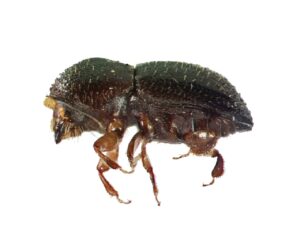[imagesource: BusinessTech]
Yesterday, a ‘leaked’ document was widely circulated on social media, laying out South Africa’s plan for what lies ahead.
Whilst she didn’t deny its authenticity, Presidency spokesperson Khusela Diko was quick to say that the 27-page document was “outdated”, and that it had undergone substantial changes during the interim.
Doubts have been cast on that front, though, as sources have said that the document was presented to Cabinet on Monday.
Diko added that the approach is still being finalised, and will be elaborated on fully by President Ramaphosa in his address tonight (Thursday).
So, before we dive in, bear in mind that there could be widespread changes to what you read below, and we will only know for certain what is the case after tonight’s address by Ramaphosa.
Here’s Fin24:
The discussion document proposed that restrictions on the movement of people and economic activity be adjusted, based on data on the control of the virus. Ideally government would adjust restrictions based on five alert levels, which will be informed by the risk of transmission.

“At each level restrictions would be more or less severe, and sectors and companies would know what activity is permitted depending on the level imposed at any time,” it reads. The alert systems can be applied nationally, but the document proposes it be applied at provincial level. Premiers, with the approval of the minister of health, may then apply alert systems to districts.
Each of those levels comes with recommendations, that would affect what economic activity is allowed in the area.
Alerts would be sent out via SMS, with the corresponding recommendation:
- Level 5: Only essential services are allowed to operate.
- Level 4: This allows for food retail stores to sell a full line of their products, open cast mines to operate at full capacity and other mines only at 50% capacity, formal waste recycling and fibre optic and IT services are among those which can operate.
- Level 3: At this stage more businesses can operate – including clothing retail. Domestic air travel is introduced with restricted flights, passenger rail can operate – but with a restricted level of passengers. Liquor retail within restricted time frames is allowed and take-aways and online food delivery is allowed.
- Level 2: Domestic air travel fully restored, including car rental. Movement between provinces with level 1 and level 2 restrictions are allowed. All mines can operate at 100% capacity.
- Level 1: All sectors are fully operational, movement acros provinces allowed, international travel limited.
Where at all possible, the document advises people to work from home, especially those over the age of 60. Provisions should also be made for those with certain existing medical conditions to work from home, or remain on leave with full pay.
Employers would also need to enact workplace protocols that include disease surveillance, such as daily checks for symptoms of COVID-19.
If you’ve been paying attention to what the experts have been saying, the idea of repeated, rolling lockdowns won’t come as a surprise.
TimesLIVE reports that while those levels of lockdown apply to many businesses, others are non-negotiable:
Sit-in restaurants, hotels, bars, shebeens, convention centres, cinemas, theatres and stadiums would remain shut, a potential blow to a variety of events, including sport, for the rest of the year.
“No gatherings of more than 10 people outside of a workplace will be permitted. Passengers on all modes of transport must wear a cloth mask to be allowed entry into the vehicle. Hand sanitisers must be made available and all passengers must sanitise their hands before entering. Public transport vehicles must be sanitised on a daily basis,” the presentation reads.
Drumroll, please, for the bit about alcohol sales…
As things stand, the sale of alcohol would be allowed within restricted hours during level three lockdown and lower.
It remains unclear what approach will be taken with the sale of tobacco products, such as cigarettes.
Again, this is subject to change, and we will only know this evening what has subsequently been adjusted in the document.
If you want to look through the 27-page document in full, the Citizen has it available at the bottom of this article.





